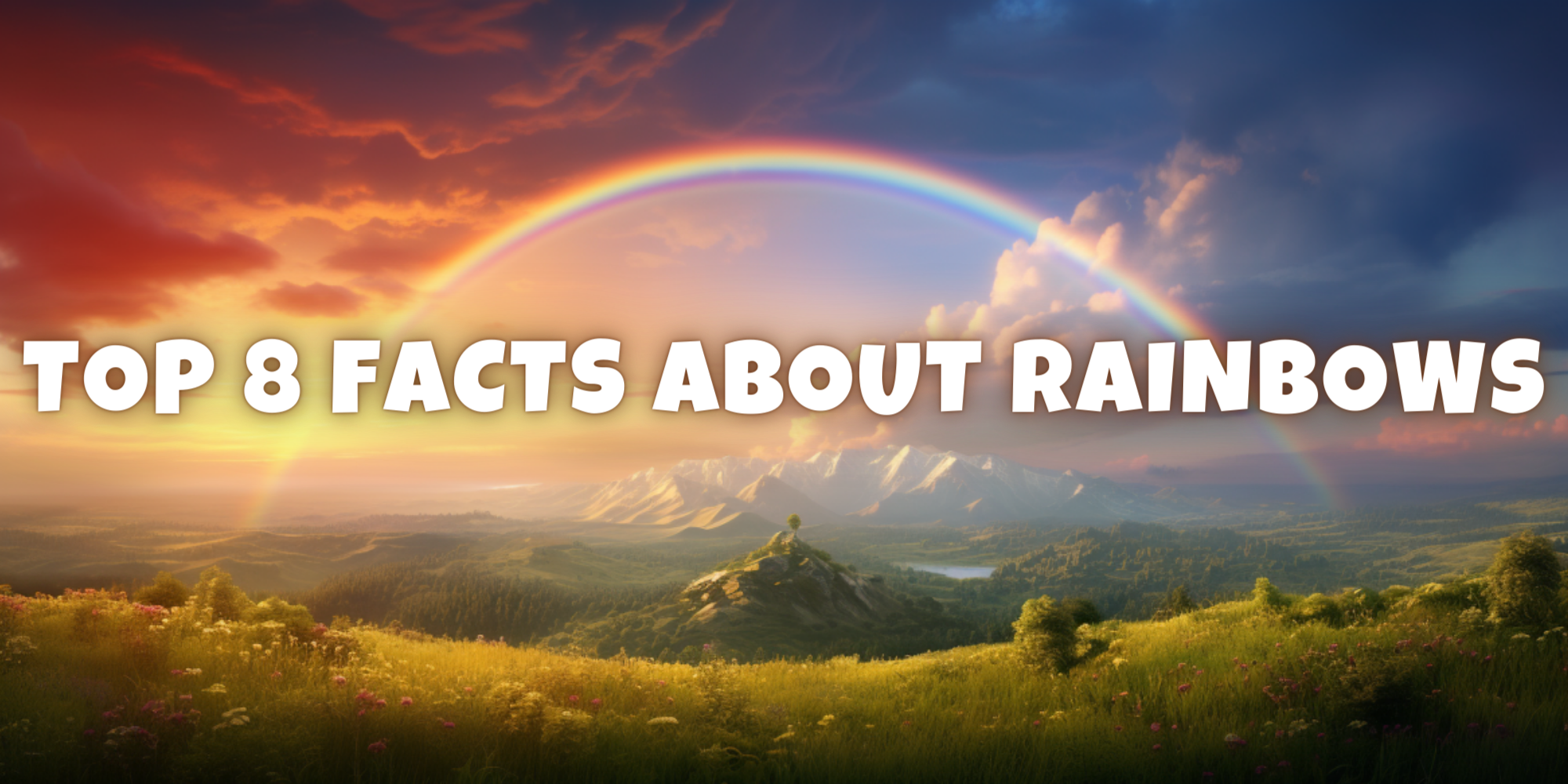
Everyone loves a rainbow. These bands of colour arching across the sky after a summer shower are one of nature’s most beautiful phenomena. But there’s more to rainbows than meets the eye. Here are eight fascinating facts about rainbows that might surprise you.
1. A Game of Reflection, Refraction, and Dispersion
Rainbows occur when sunlight gets refracted, or bent, by droplets of water. The light enters the water droplet, bends as it slows down, bounces off the inside surface of the droplet, bends again as it speeds up whilst leaving the droplet, and voila, we have a rainbow. This process, known as dispersion, separates the white sunlight into its component colours, creating a spectrum of light.
2. An Array of Colours—Always in Order
No matter where you spot a rainbow, the colour arrangement is always the same—red on the outside and violet on the inside. This order is due to the way different colours of light are refracted. Each colour of light is bent at a slightly different angle, with red being refracted the least and violet the most. That’s why red always appears on the outer edge of the rainbow, and violet on the inner edge.
3. Circular Rainbows—They’re Just Not Half of It
The rainbows we typically see appear as a semi-circle, but rainbows are actually full circles. We only see a half-circle because the ground interferes with the bottom part. In special conditions, like from an aeroplane or atop a mountain, it’s possible to see a full circle rainbow.
4. Double Rainbows—More Than a Repeat
Double rainbows occur when light bounces twice inside each water droplet before exiting. The secondary rainbow appears above the primary rainbow, and interestingly, the colour sequence is reversed. The secondary rainbow is also usually fainter due to the extra bounce of light, which leads to more light escaping from the droplet.
5. Rainbows at Night—Moonbows
Rainbows aren’t exclusive to daylight. Under the right conditions, a “moonbow,” or lunar rainbow, can occur. They’re caused by the refraction of light, usually from the moon. Because the light is much dimmer than sunlight, moonbows often appear to be white or colourless. However, with a bright full moon and a dark sky, a moonbow can display colours.
6. Supernumerary Rainbows—A Delicate Phenomenon
Sometimes, on the inner side of the primary rainbow, you may notice several faint, pastel-coloured bands. These are known as supernumerary rainbows. Unlike the regular red to violet bands, supernumerary bands don’t include all the colours. They form due to the interference of light—specifically, the interaction of light waves exiting the water droplets at slightly different angles.
7. The Alexander’s Dark Band
Look between a double rainbow, and you might notice an intriguing darker band of sky. This is called Alexander’s dark band, named after Alexander of Aphrodisias who first described it around 200 AD. This dark area arises because, while droplets inside the primary rainbow scatter light towards you, droplets in-between the two rainbows scatter light away from you.
8. Everyone Sees Their Own Rainbow
Believe it or not, no two people see the same rainbow. Since the appearance of a rainbow depends on the observer’s position relative to the sun and the rain, even a small shift in position will change the way the rainbow looks. The person next to you is standing in a slightly different spot and thus sees a different rainbow!
From their extraordinary formation process to the myriad of colours they display, rainbows are genuinely one of nature’s most magical spectacles. They serve as a vivid reminder of the incredible beauty that science and nature weave together—beauty that is all the more special because of its fleeting, elusive nature. So the next time you see a rainbow, take a moment to appreciate the atmospheric masterpiece painted across the sky.
.thumbnailWrapper
width:6.62rem !important;
.alsoReadTitleImage
min-width: 81px !important;
min-height: 81px !important;
.alsoReadMainTitleText
font-size: 14px !important;
line-height: 20px !important;
.alsoReadHeadText
font-size: 24px !important;
line-height: 20px !important;











